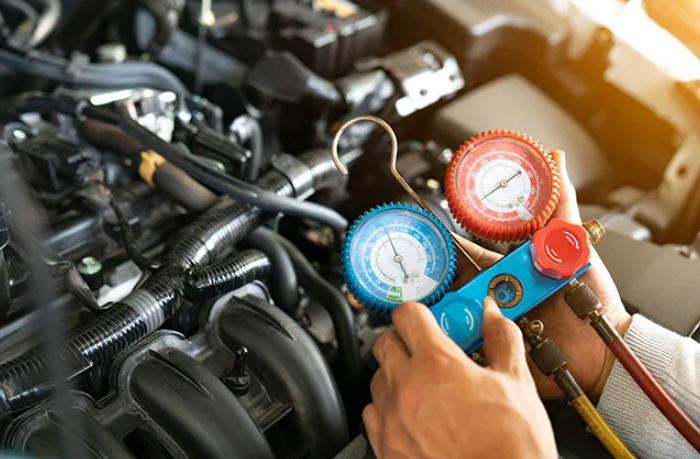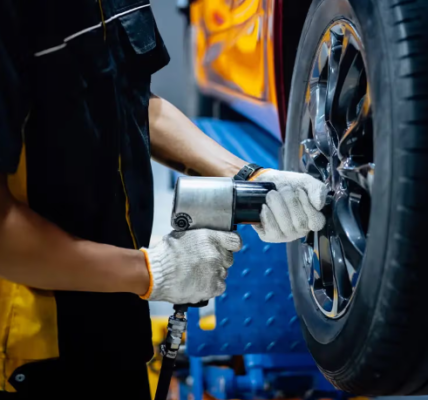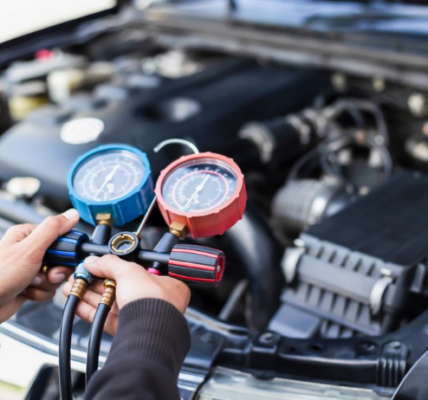There’s nothing worse than cranking up your car’s AC on a hot day and getting a blast of warm air instead. If you’ve ever dealt with a faulty auto air conditioner, you know how frustrating (and sweaty) it can be. Fixing your car’s AC may seem daunting, but with a little know-how, you can troubleshoot the problem or figure out when to call in a professional. Let me walk you through my experience and share some tips to get your air conditioning running ice-cold again.
Signs Your Car’s AC Needs Attention
The first step in repairing your car’s air conditioner is recognizing when there’s a problem. Some common signs include:
- Warm Air: The most obvious one—when cold air is nowhere to be found.
- Weak Airflow: Even with the fan on high, it feels like a faint breeze.
- Unusual Smells: A musty or sour odor could mean mold in the system or a clogged cabin air filter.
- Weird Noises: If you hear a rattling or clicking sound when the AC is running, it might indicate a compressor issue.
- Puddles Inside the Cabin: This could be a clogged evaporator drain hose causing water to leak inside.
For me, it all started with weak airflow during a summer road trip. By the end of the week, my AC wasn’t cooling at all. Spoiler alert: it turned out to be a refrigerant leak, but I had to learn the hard way how to diagnose it.
Common Causes of AC Problems
Car AC systems are surprisingly complex, with several components working together. When something goes wrong, it’s usually one of these:
- Low Refrigerant: Over time, refrigerant can leak out, especially if there’s damage to the system. Without enough refrigerant, the AC can’t cool properly.
- Faulty Compressor: The compressor is the heart of the system, and if it fails, the entire AC stops working. This is often due to wear and tear or lack of use in colder months.
- Clogged Cabin Air Filter: A dirty filter restricts airflow, making it feel like your AC isn’t working even though the system is fine.
- Electrical Issues: Blown fuses, bad wiring, or a malfunctioning AC switch can disrupt the system.
- Condenser Problems: If the condenser is blocked or damaged, it can’t release heat properly, leading to warm air.
DIY AC Troubleshooting and Repairs
If your AC isn’t working, don’t panic just yet. Some problems are easy to fix yourself. Here’s a step-by-step guide:
- Check the Cabin Air Filter:
- A clogged filter is one of the easiest fixes. It’s usually located behind the glove box. If it’s dirty, replace it—it’s cheap and makes a big difference.
- Inspect for Refrigerant Leaks:
- Look for oily residue around the AC lines or connections. If you spot a leak, you’ll need to have it professionally repaired and recharged.
- Test the Compressor:
- With the engine running, turn on the AC and check if the compressor clutch engages. If it doesn’t, the issue might be electrical or related to low refrigerant.
- Clean the Condenser:
- Pop the hood and check the front of the condenser (it looks like a mini radiator). Dirt or debris can block airflow—use a gentle spray of water to clean it.
- Recharge the System:
- If everything looks fine but the air is still warm, you might need to add refrigerant. You can buy an AC recharge kit at an auto parts store, but follow the instructions carefully—overcharging the system can cause damage.
When to Call a Professional
While some repairs are DIY-friendly, others require specialized tools and knowledge. Call a professional if:
- You suspect a major refrigerant leak or need to replace the compressor.
- There’s an electrical issue you can’t diagnose.
- You’re not confident handling refrigerant (it can be dangerous if mishandled).
When I couldn’t figure out why my AC was still blowing warm air after trying all the basics, I took my car to a shop. They used a UV dye and a leak detector to find a tiny crack in the evaporator core—something I never would’ve spotted on my own.
Preventing Future AC Problems
Like most car issues, regular maintenance can save you a ton of headaches later. Here are a few tips to keep your AC in good shape:
- Run the AC Year-Round: Even in winter, turn it on for a few minutes once a week to keep the compressor lubricated.
- Change the Cabin Air Filter Regularly: Check it every 12,000 to 15,000 miles, or sooner if you drive in dusty areas.
- Inspect for Leaks Annually: Have your AC system checked for leaks or damage before summer hits.
- Park in the Shade: Reducing heat exposure can ease the strain on your AC system.
Why Fixing Your AC Is Worth It
Driving without AC might seem manageable at first, but trust me—when it’s 90°F and you’re stuck in traffic, you’ll regret not fixing it. A working air conditioner isn’t just about comfort; it also helps with safety by preventing driver fatigue and keeping you alert.
So, whether you’re tackling a DIY repair or taking it to a shop, don’t put off fixing your car’s AC. A little effort now can save you from a whole lot of sweat later. Stay cool out there!








